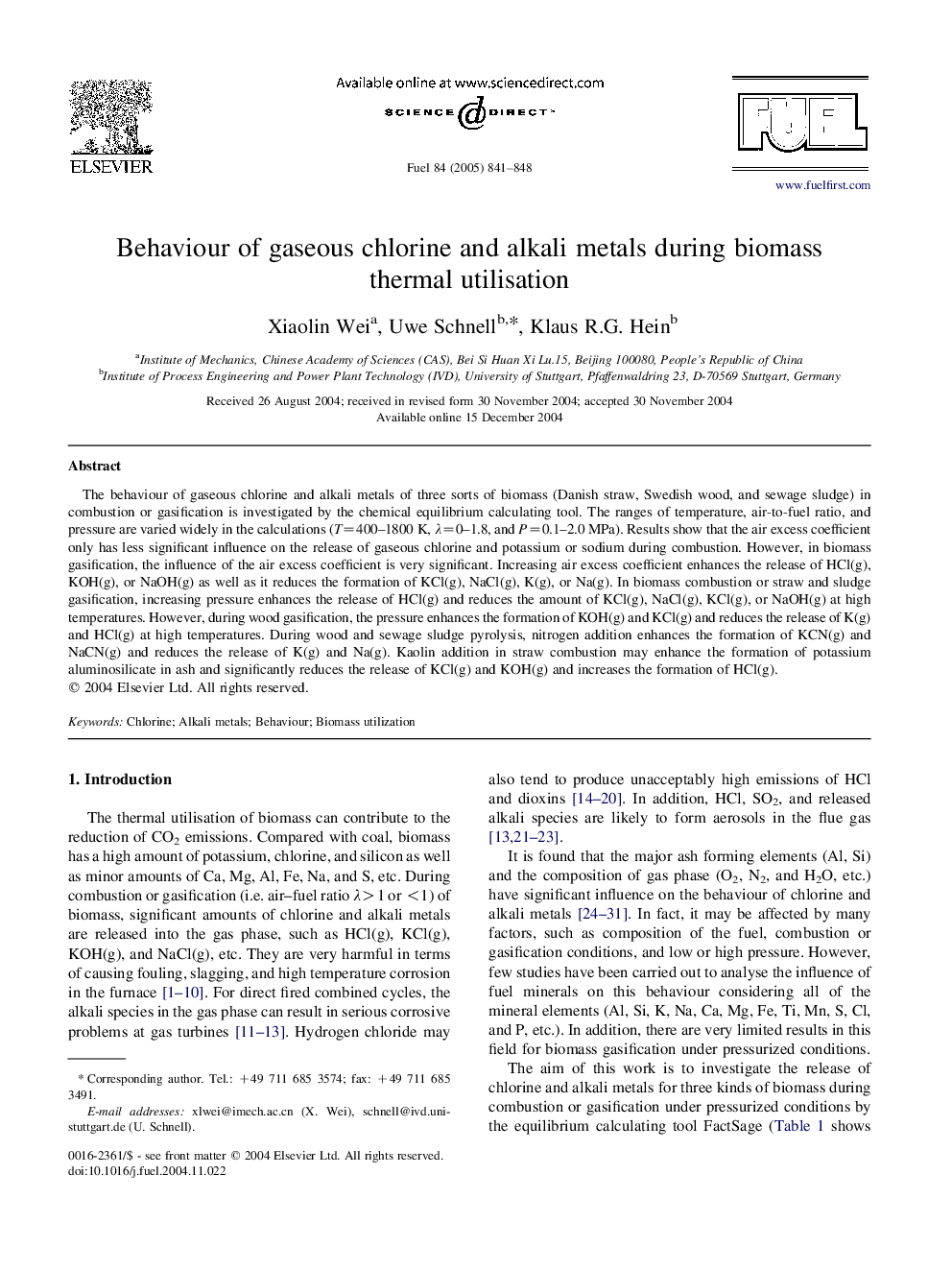| کد مقاله | کد نشریه | سال انتشار | مقاله انگلیسی | نسخه تمام متن |
|---|---|---|---|---|
| 9629150 | 461287 | 2005 | 8 صفحه PDF | دانلود رایگان |
عنوان انگلیسی مقاله ISI
Behaviour of gaseous chlorine and alkali metals during biomass thermal utilisation
دانلود مقاله + سفارش ترجمه
دانلود مقاله ISI انگلیسی
رایگان برای ایرانیان
کلمات کلیدی
موضوعات مرتبط
مهندسی و علوم پایه
مهندسی شیمی
مهندسی شیمی (عمومی)
پیش نمایش صفحه اول مقاله

چکیده انگلیسی
The behaviour of gaseous chlorine and alkali metals of three sorts of biomass (Danish straw, Swedish wood, and sewage sludge) in combustion or gasification is investigated by the chemical equilibrium calculating tool. The ranges of temperature, air-to-fuel ratio, and pressure are varied widely in the calculations (T=400-1800 K, λ=0-1.8, and P=0.1-2.0 MPa). Results show that the air excess coefficient only has less significant influence on the release of gaseous chlorine and potassium or sodium during combustion. However, in biomass gasification, the influence of the air excess coefficient is very significant. Increasing air excess coefficient enhances the release of HCl(g), KOH(g), or NaOH(g) as well as it reduces the formation of KCl(g), NaCl(g), K(g), or Na(g). In biomass combustion or straw and sludge gasification, increasing pressure enhances the release of HCl(g) and reduces the amount of KCl(g), NaCl(g), KCl(g), or NaOH(g) at high temperatures. However, during wood gasification, the pressure enhances the formation of KOH(g) and KCl(g) and reduces the release of K(g) and HCl(g) at high temperatures. During wood and sewage sludge pyrolysis, nitrogen addition enhances the formation of KCN(g) and NaCN(g) and reduces the release of K(g) and Na(g). Kaolin addition in straw combustion may enhance the formation of potassium aluminosilicate in ash and significantly reduces the release of KCl(g) and KOH(g) and increases the formation of HCl(g).
ناشر
Database: Elsevier - ScienceDirect (ساینس دایرکت)
Journal: Fuel - Volume 84, Issues 7â8, May 2005, Pages 841-848
Journal: Fuel - Volume 84, Issues 7â8, May 2005, Pages 841-848
نویسندگان
Xiaolin Wei, Uwe Schnell, Klaus R.G. Hein,